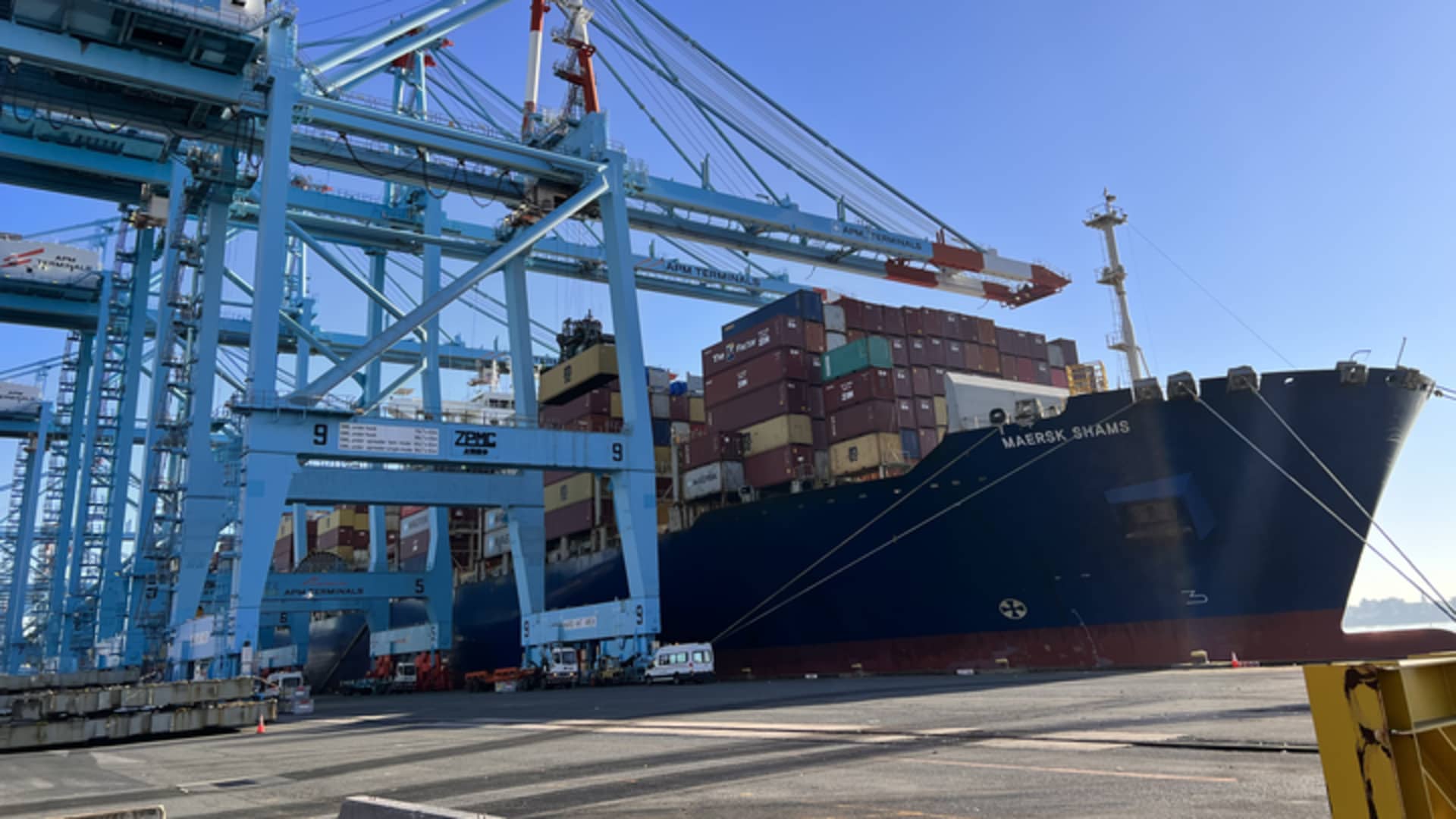Shipping industry could lose $10 billion a year battling climate change by 2050

Severe drought has caused water levels in the Mississippi River to drop so low that ships have been running aground. To keep commerce flowing, the U.S. Army Corps of Engineers is now using a dredge ship to push out silt in the river near Vicksburg, Mississippi. The chief of navigation for the corps told local media the low water level can cause a major financial impact.
It is just the latest in a growing number of disruptions hitting the shipping industry as it battles the effects of climate change.
In the Panama Canal this past summer, severe drought caused authorities to reduce the daily number of ships traversing it, resulting in severe backups that hit supply chains. At the end of September, they did it again. A similar reduction in 2019 cost global shipping as much as $370 million, according to a study by RTI International.
That same year, record low water levels in the Mississippi River disrupted transportation of agricultural goods, costing about $1 billion in losses.
In October 2021, 109 containers were washed overboard during a rare, so-called “bomb cyclone” off Vancouver Island, Canada.
All of this is not lost on Maersk, the world’s second-largest container ship company.
“We firmly believe that climate change poses a great threat to the shipping industry and the consumer overall. We are definitely seeing disruption, disruption happening all the time,” said Narin Phol, Maersk’s president for North America.
About 90% of traded goods are carried over water, and maritime trade volume is expected to triple by 2050 as demand increases. This shift comes as shipping is at increasing risk from tropical storms, inland flooding, sea level rise, drought and extreme heat.
“Imagine that if the port has an impact, but that we are not able to unload the cargo here, there’s a downstream impact to the supply chain, and also towards the upstream. So, it’s all connected,” Phol said.
The impacts of climate change on ports alone, from damage to disruption, could cost the shipping industry up to $10 billion annually by 2050 and up to $25 billion per year by 2100, according to the RTI study, which was reviewed by the Environmental Defense Fund.
Of all the transportation sectors, shipping is one of the most vulnerable to the effects of climate change. Whether it’s out at sea, in rivers or canals, or even coming into port. But shipping is also one of the slowest to cut carbon emissions.
In September, Maersk unveiled its first containership powered by green methanol, which emits less carbon dioxide than traditional vessels. Twenty-four more such ships are coming, but the fuel is both expensive and scarce.
“The technology, you could say, it’s ready, it’s there. But it’s a major shift that is needed, and it will take a lot of time,” said Hakan Agnevall, CEO of Wartsila, a global technology and energy company that builds engines for the marine industry.
“Even if we have engines ready for new fuels, the fuel needs to be produced, there needs to be significant investments made, and it needs to be green fuels; it means it needs to be produced by green energy,” Agnevall said.
Shipping accounts for roughly 3% of global greenhouse gas emissions, but it took until this past July for the international industry to finally agree to a net zero goal by 2050.
“It’s actually a big step compared to where countries wanted to go five years ago, but even with this big step, it’s not — the goals that have been set will not bring us to the Paris Agreement, not bring us to the 1.5 degrees [Celsius], so it’s a step in the right direction but it’s not enough,” Agnevall said.
In the meantime, the industry is focusing more on both resilience and planning. Maersk is changing its ship design and upgrading its weather-monitoring systems. Wartsila is turning to artificial intelligence, using digital solutions to combine weather forecasts, climate data and logistics data to deal with potential disruptions and disasters.
“It’s not only about the routing, it’s also how you plan together with the ports to make sure that, with increased uncertainty, we really leverage the digital tools to do the best we can,” Agnevall added.
— CNBC senior producer Erica Posse contributed to this report.









